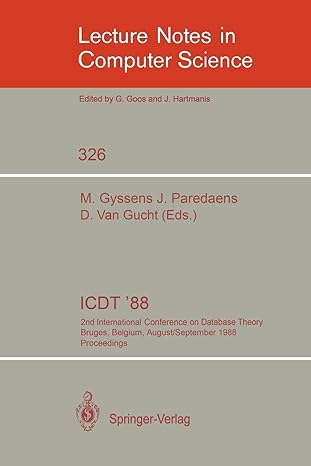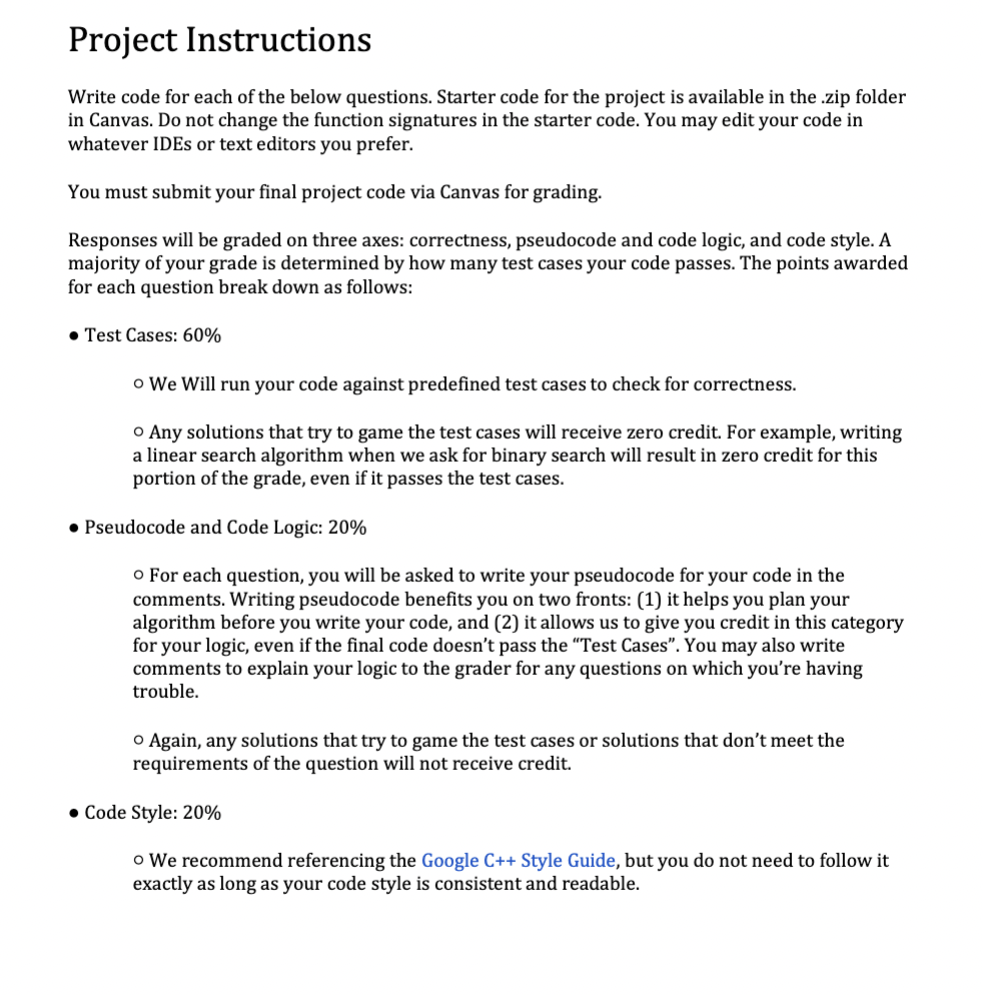
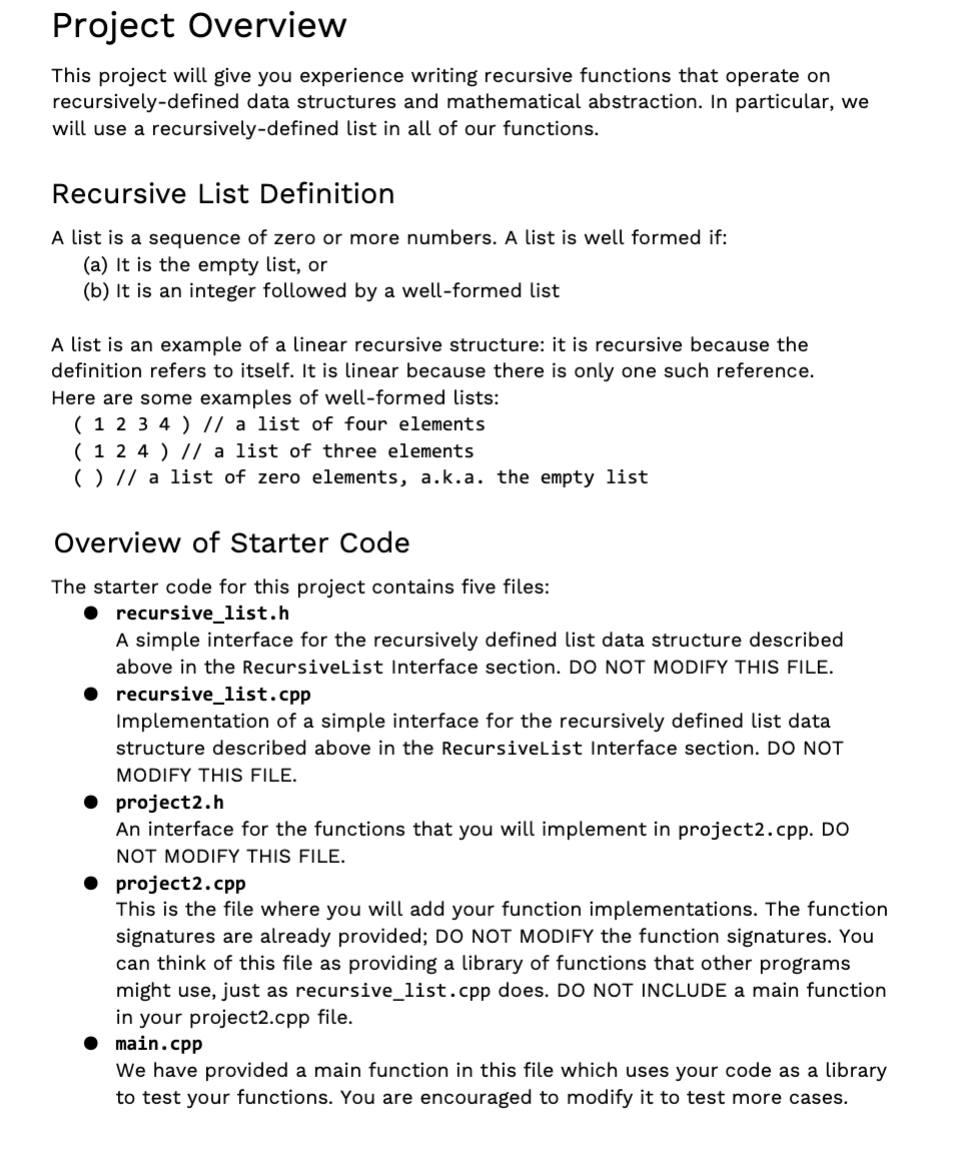
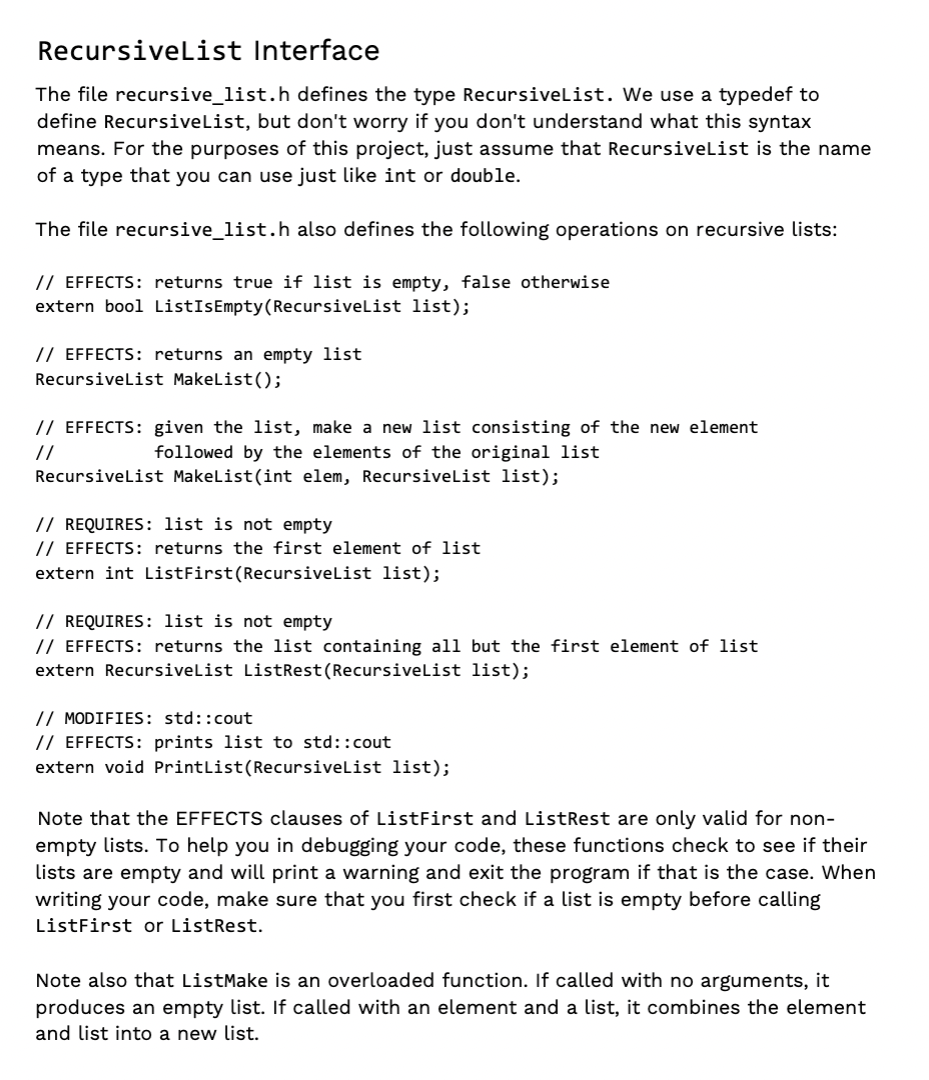
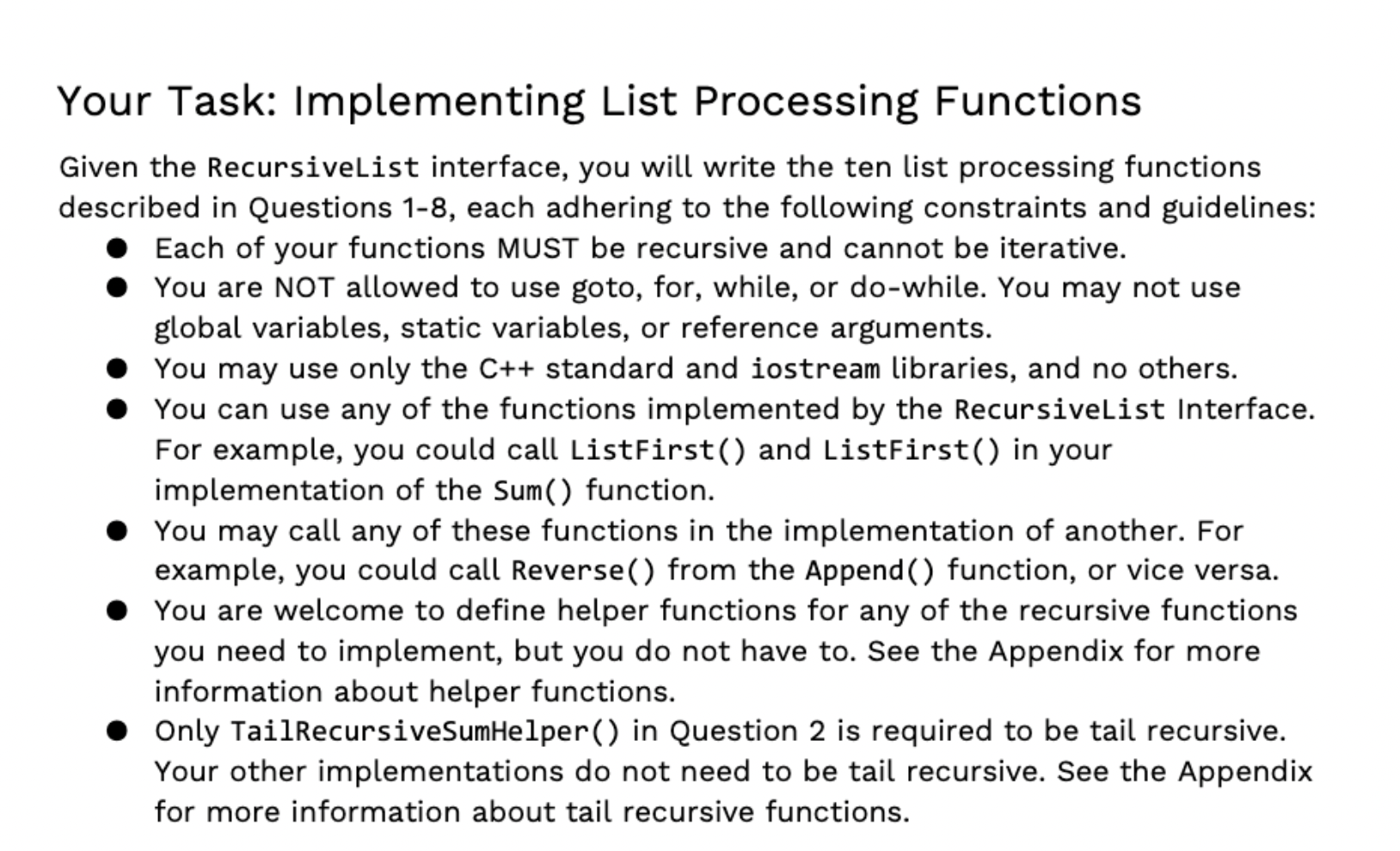


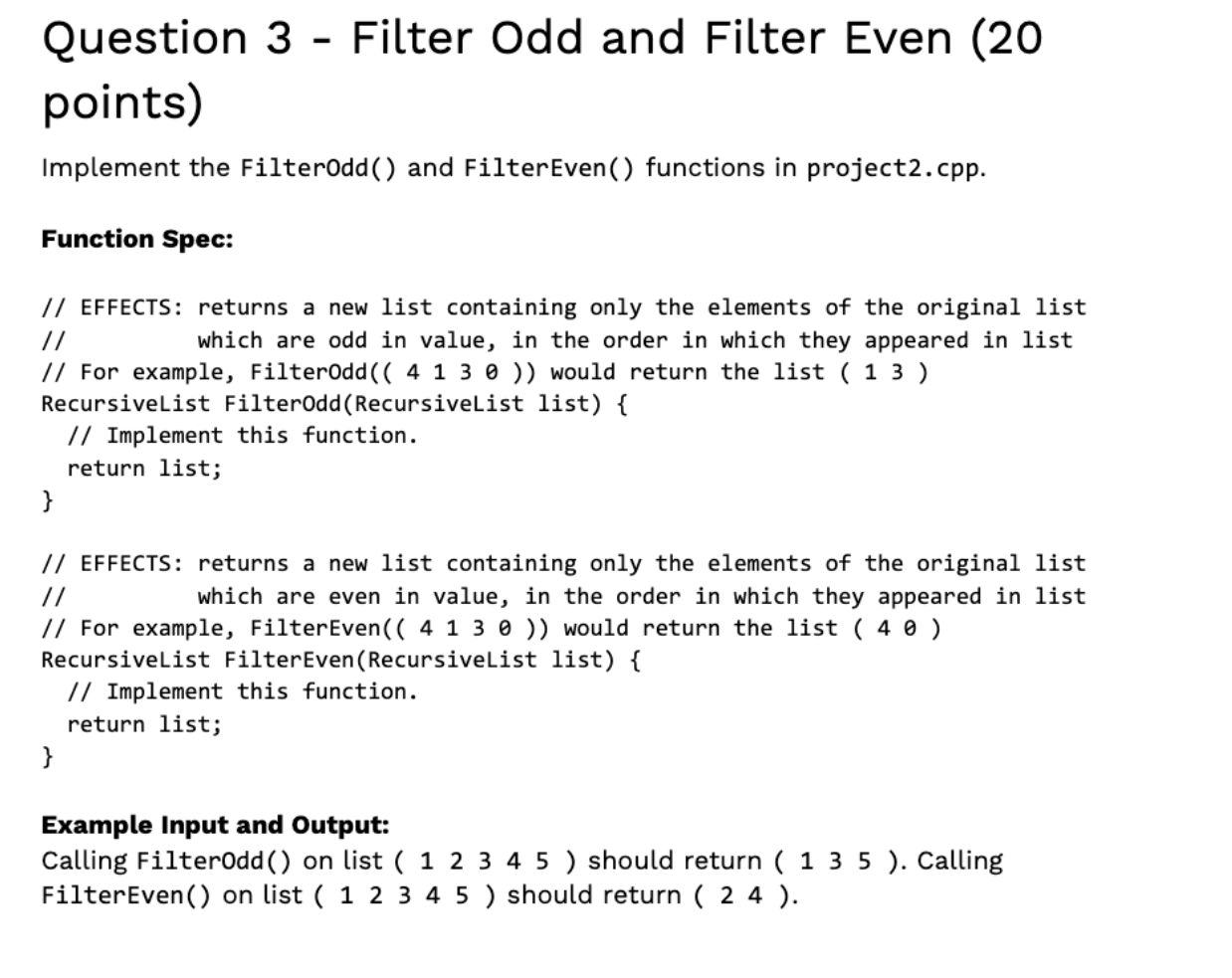
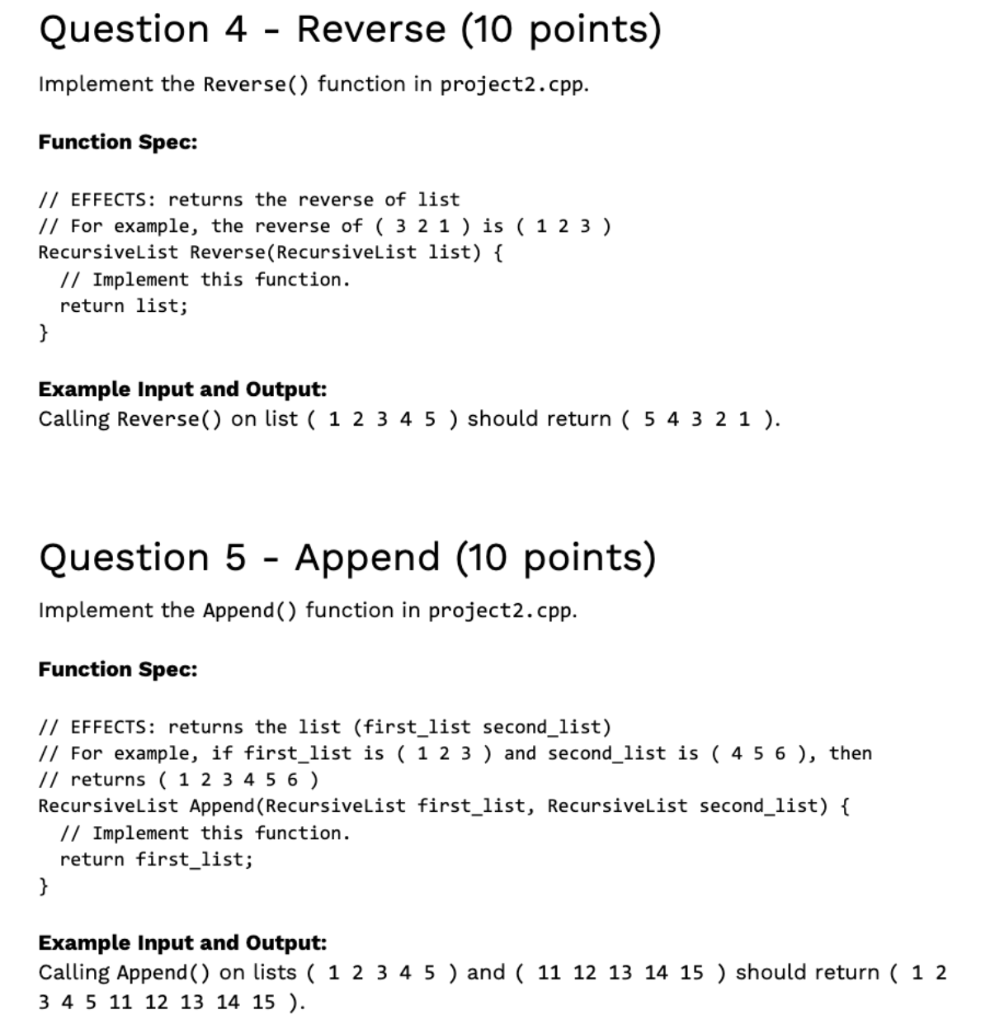
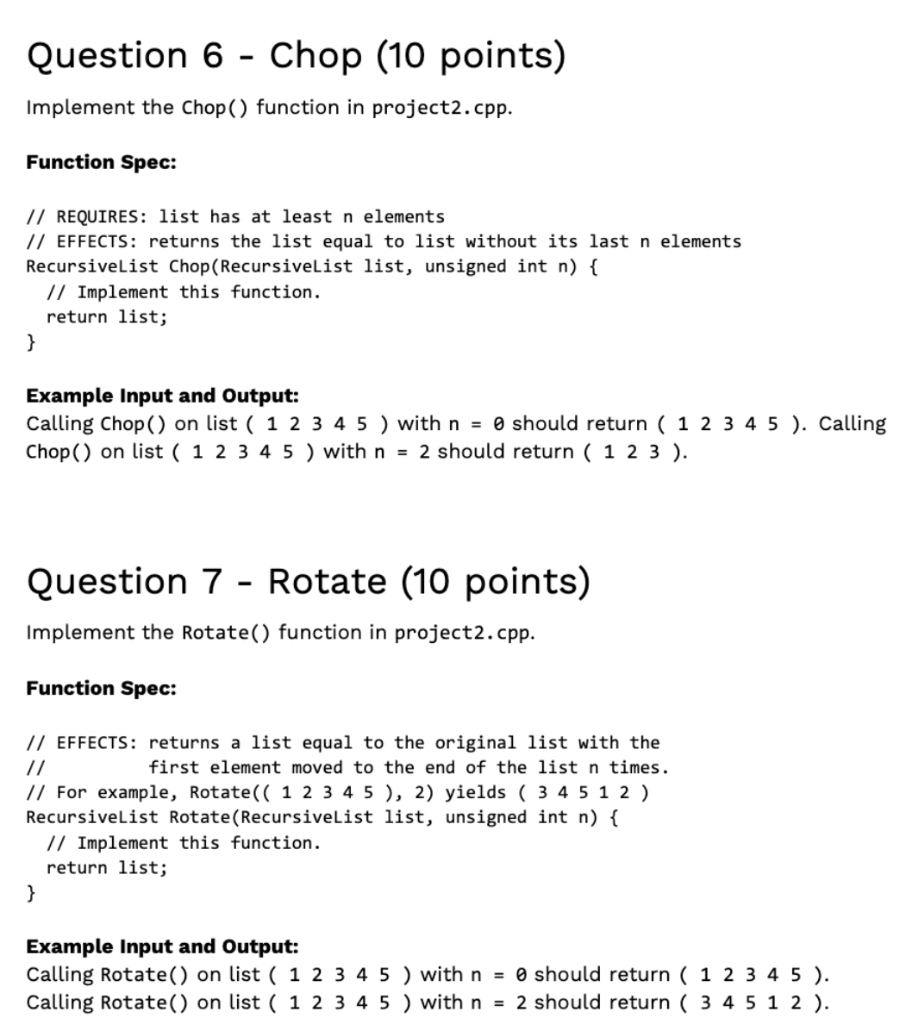
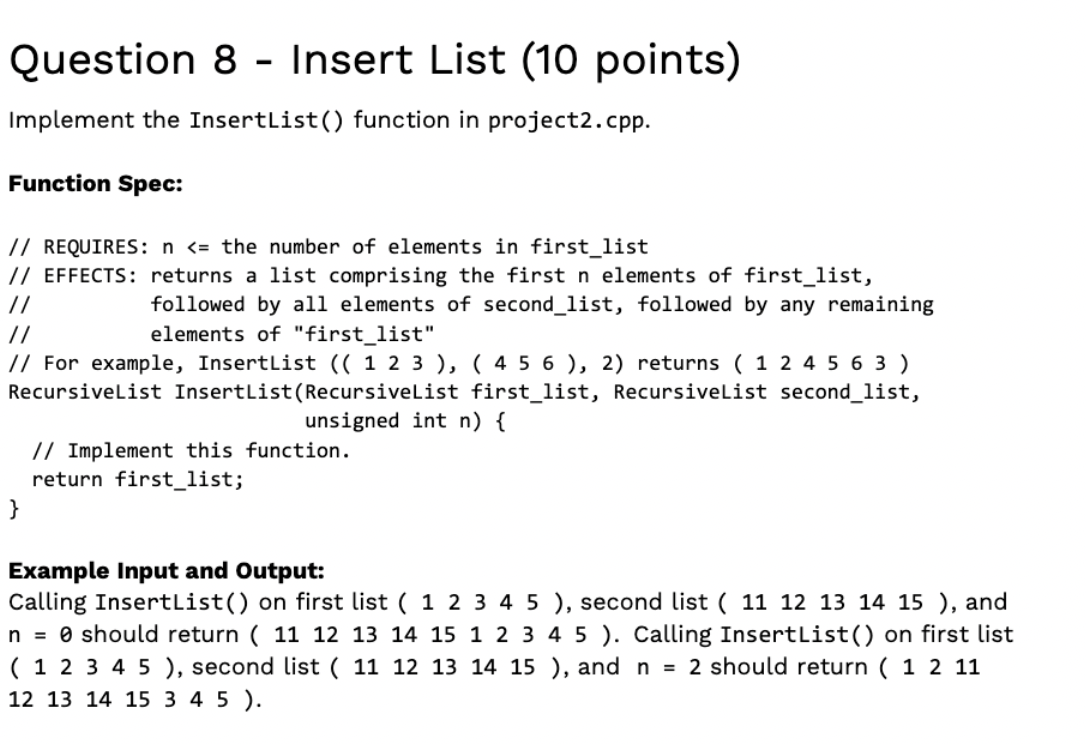
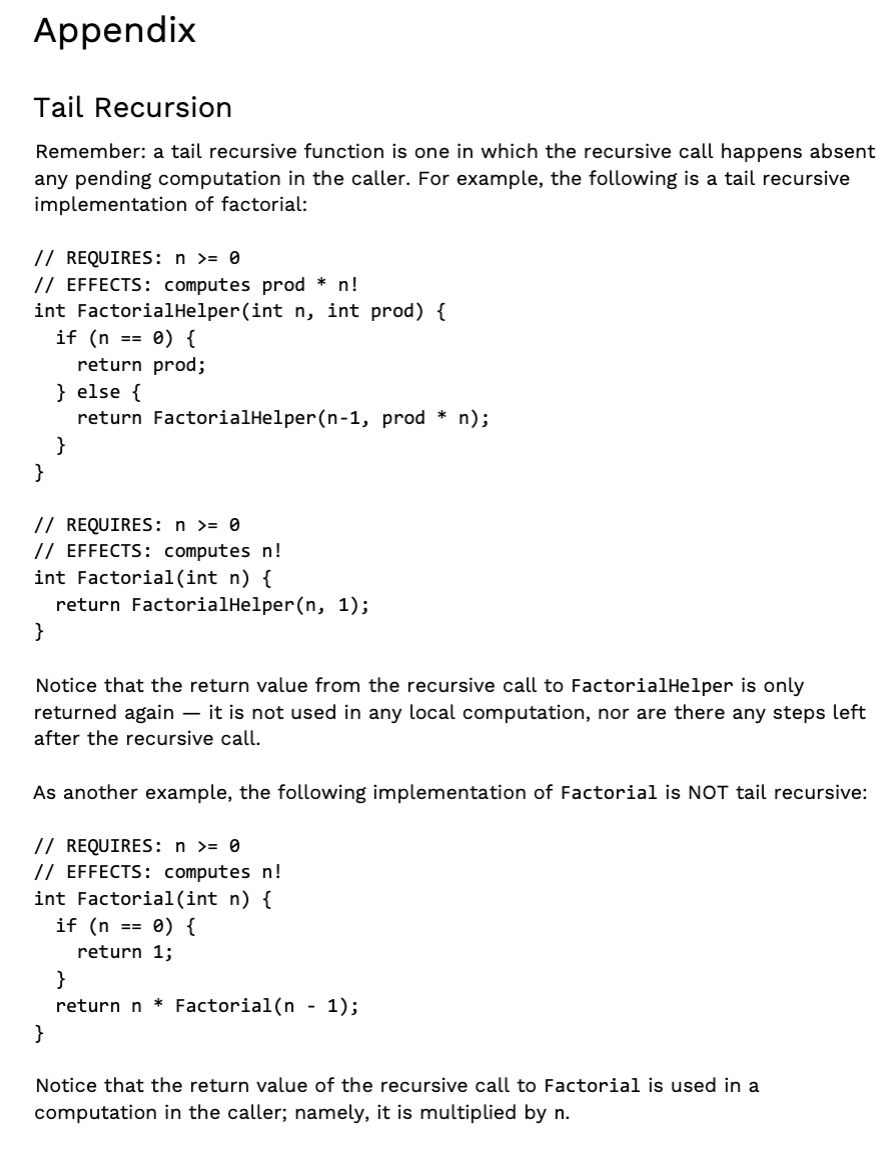
Project Instructions Write code for each of the below questions. Starter code for the project is available in the zip folder in Canvas. Do not change the function signatures in the starter code. You may edit your code in whatever IDEs or text editors you prefer. You must submit your final project code via Canvas for grading. Responses will be graded on three axes: correctness, pseudocode and code logic, and code style. A majority of your grade is determined by how many test cases your code passes. The points awarded for each question break down as follows: - Test Cases: 60% - We Will run your code against predefined test cases to check for correctness. - Any solutions that try to game the test cases will receive zero credit. For example, writing a linear search algorithm when we ask for binary search will result in zero credit for this portion of the grade, even if it passes the test cases. - Pseudocode and Code Logic: 20% o For each question, you will be asked to write your pseudocode for your code in the comments. Writing pseudocode benefits you on two fronts: (1) it helps you plan your algorithm before you write your code, and (2) it allows us to give you credit in this category for your logic, even if the final code doesn't pass the "Test Cases". You may also write comments to explain your logic to the grader for any questions on which you're having trouble. - Again, any solutions that try to game the test cases or solutions that don't meet the requirements of the question will not receive credit. - Code Style: 20% o We recommend referencing the Google C++ Style Guide, but you do not need to follow it exactly as long as your code style is consistent and readable. Project Overview This project will give you experience writing recursive functions that operate on recursively-defined data structures and mathematical abstraction. In particular, we will use a recursively-defined list in all of our functions. Recursive List Definition A list is a sequence of zero or more numbers. A list is well formed if: (a) It is the empty list, or (b) It is an integer followed by a well-formed list A list is an example of a linear recursive structure: it is recursive because the definition refers to itself. It is linear because there is only one such reference. Here are some examples of well-formed lists: (1234) // a list of four elements (124) // a list of three elements ( ) // a list of zero elements, a.k.a. the empty list Overview of Starter Code The starter code for this project contains five files: - recursive_list.h A simple interface for the recursively defined list data structure described above in the RecursiveList Interface section. DO NOT MODIFY THIS FILE. - recursive_list.cpp Implementation of a simple interface for the recursively defined list data structure described above in the RecursiveList Interface section. DO NOT MODIFY THIS FILE. - project2.h An interface for the functions that you will implement in project2.cpp. DO NOT MODIFY THIS FILE. - project2.cpp This is the file where you will add your function implementations. The function signatures are already provided; DO NOT MODIFY the function signatures. You can think of this file as providing a library of functions that other programs might use, just as recursive_list.cpp does. DO NOT INCLUDE a main function in your project2.cpp file. - main.cpp We have provided a main function in this file which uses your code as a library to test your functions. You are encouraged to modify it to test more cases. RecursiveList Interface The file recursive_list.h defines the type RecursiveList. We use a typedef to define RecursiveList, but don't worry if you don't understand what this syntax means. For the purposes of this project, just assume that Recursivelist is the nar of a type that you can use just like int or double. The file recursive_list.h also defines the following operations on recursive lists: // EFFECTS: returns true if list is empty, false otherwise extern bool ListIsEmpty(Recursivelist list); // EFFECTS: returns an empty list RecursiveList MakeList(); // EFFECTS: given the list, make a new list consisting of the new element // followed by the elements of the original list RecursiveList MakeList(int elem, RecursiveList list); // REQUIRES: list is not empty // EFFECTS: returns the first element of list extern int ListFirst(Recursivelist list); // REQUIRES: list is not empty // EFFECTS: returns the list containing all but the first element of list extern Recursivelist ListRest(RecursiveList list); // MODIFIES: std: :cout // EFFECTS: prints list to std:: cout extern void Printlist(RecursiveList list); Note that the EFFECTS clauses of ListFirst and ListRest are only valid for nonempty lists. To help you in debugging your code, these functions check to see if th lists are empty and will print a warning and exit the program if that is the case. Wr writing your code, make sure that you first check if a list is empty before calling ListFirst or ListRest. Note also that ListMake is an overloaded function. If called with no arguments, it produces an empty list. If called with an element and a list, it combines the eleme and list into a new list. Your Task: Implementing List Processing Functions Given the RecursiveList interface, you will write the ten list processing functions described in Questions 1-8, each adhering to the following constraints and guidelines: - Each of your functions MUST be recursive and cannot be iterative. - You are NOT allowed to use goto, for, while, or do-while. You may not use global variables, static variables, or reference arguments. - You may use only the C++ standard and iostream libraries, and no others. - You can use any of the functions implemented by the RecursiveList Interface. For example, you could call ListFirst() and ListFirst() in your implementation of the Sum() function. - You may call any of these functions in the implementation of another. For example, you could call Reverse() from the Append() function, or vice versa. - You are welcome to define helper functions for any of the recursive functions you need to implement, but you do not have to. See the Appendix for more information about helper functions. - Only TailRecursiveSumHelper() in Question 2 is required to be tail recursive. Your other implementations do not need to be tail recursive. See the Appendix for more information about tail recursive functions. Implement the Sum() and Product() functions in project2.cpp. Your implementation of Sum() should NOT be tail recursive and should NOT use a helper function. See the Appendix for more information on tail recursion and helper functions. Function Spec: // EFFECTS: returns the sum of each element in list, or zero if the list is // empty int Sum(Recursivelist list) \{ // Implement this function. return ; \} // EFFECTS: returns the product of each element in list, or one if the list is // empty int Product(RecursiveList list) \{ // Implement this function. return ; \} Example Input and Output: Calling Sum() on list ( 12345) should return 15. Calling Product() on list (123 45 ) should return 120. Implement the TailRecursiveSumHelper() function in project2.cpp. Your implementation of TailRecursiveSumHelper() MUST be tail recursive. TailRecursiveSumHelper () is called by the provided function TailRecursiveSum(). You should not modify TailRecursiveSum(). See the Appendix for more information on tail recursion and helper functions. Function Spec: // EFFECTS: adds the next element in the list to the sum so far int TailRecursiveSumHelper(RecursiveList list, int sum_so_far) \{ // Implement this function. return 0 ; 3 // EFFECTS: returns the sum of each element in list, or zero if the list is // empty // THIS FUNCTION IS PROVIDED AS PART OF THE STARTER CODE. // DO NOT MODIFY THIS FUNCTION. int TailRecursiveSum(Recursivelist list) \{ return TailRecursiveSumHelper(list, ); \} Example Input and Output: Calling TailRecursiveSum() on list ( 12345 ) should return 15. Note that TailRecursiveSum() has the same expected output as Sum(). points) Implement the Filterodd() and FilterEven() functions in project2.cpp. Function Spec: // EFFECTS: returns a new list containing only the elements of the original list // which are odd in value, in the order in which they appeared in list // For example, Filterodd(( 4130)) would return the list (13) RecursiveList Filterodd(RecursiveList list) \{ // Implement this function. return list; \} // EFFECTS: returns a new list containing only the elements of the original list // which are even in value, in the order in which they appeared in list // For example, FilterEven(( (4130)) would return the list (40) RecursiveList FilterEven(RecursiveList list) \{ // Implement this function. return list; \} Example Input and Output: Calling Filterodd() on list ( 12345) should return ( 135). Calling FilterEven() on list ( 12345) should return ( 24). Question 4 - Reverse (10 points) Implement the Reverse() function in project2. cpp. Function Spec: // EFFECTS: returns the reverse of list // For example, the reverse of (321) is (123) Recursivelist Reverse(Recursivelist list) \{ // Implement this function. return list; \} Example Input and Output: Calling Reverse() on list ( 12345) should return ( 54321). Question 5 - Append (10 points) Implement the Append() function in project2.cpp. Function Spec: // EFFECTS: returns the list (first_list second_list) // returns ( (123456) RecursiveList Append(RecursiveList first_list, RecursiveList second_list) \{ // Implement this function. return first_list; \} Example Input and Output: Question 6 - Chop (10 points) Implement the Chop() function in project2.cpp. Function Spec: // REQUIRES: list has at least n elements // EFFECTS: returns the list equal to list without its last n elements Recursivelist Chop(Recursivelist list, unsigned int n ) \{ // Implement this function. return list; \} Example Input and Output: Calling Chop() on list ( (12345) with n=0 should return ( 12345). Calling Chop() on list (12345) with n=2 should return ( 123). Question 7 - Rotate ( 10 points) Implement the Rotate() function in project2.cpp. Function Spec: // EFFECTS: returns a list equal to the original list with the // first element moved to the end of the list n times. // For example, Rotate(( (12345),2) yields ( 34512) Recursivelist Rotate(Recursivelist list, unsigned int n ) \{ // Implement this function. return list; \} Example Input and Output: Calling Rotate() on list ( (12345) with n=0 should return ( 12345). Calling Rotate () on list (12345) with n=2 should return (34512). Question 8 - Insert List (10 points) Implement the InsertList() function in project2.cpp. Function Spec: Example Input and Output: Calling InsertList() on first list ( 12345), second list ( 1112131415), and n=0 should return ( 111213141512345). Calling InsertList() on first list (12345), second list ( 1112131415), and n=2 should return ( 1211 12131415345). Appendix Tail Recursion Remember: a tail recursive function is one in which the recursive call happens absent any pending computation in the caller. For example, the following is a tail recursive implementation of factorial: // REQUIRES: n>=0 // EFFECTS: computes prod n ! int FactorialHelper(int n, int prod) \{ if (n=0){ return prod; \} else return FactorialHelper (n1, prod n); \} / // REQUIRES: n >= 0 // EFFECTS: computes n! int Factorial(int n){ return FactorialHelper (n,1); \} Notice that the return value from the recursive call to FactorialHelper is only returned again - it is not used in any local computation, nor are there any steps left after the recursive call. As another example, the following implementation of Factorial is NOT tail recursive: // REQUIRES: n>=0 // EFFECTS: computes n ! int Factorial(int n){ if (n=0){ return 1; \} return n Factorial (n1); ? Notice that the return value of the recursive call to Factorial is used in a computation in the caller; namely, it is multiplied by n

















